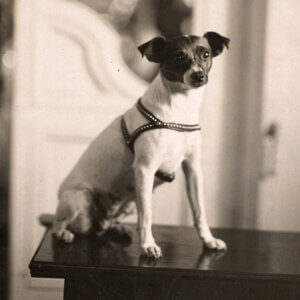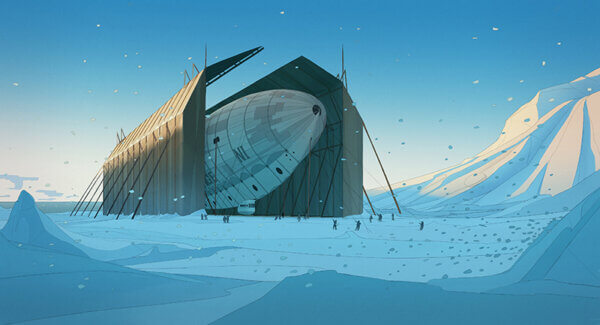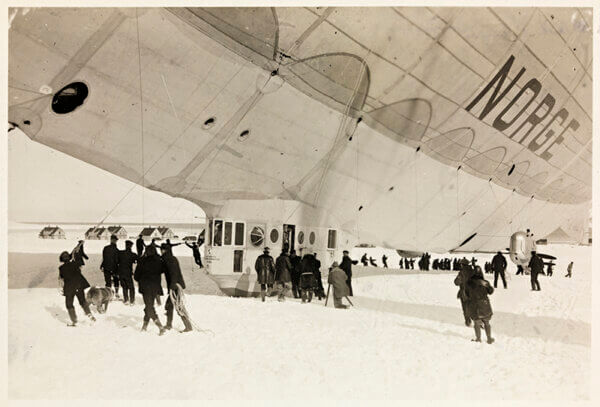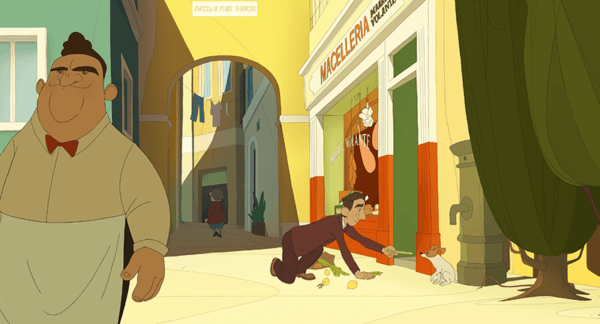Feature Film Review: Titina – “A tale of little men and their little feelings in gigantic landscapes”
Based on the true tale of friendship and rivalry between Umberto Nobile and Roald Amundsen, Titina is the first animated feature film by Norwegian acclaimed director Kajsa Naess, whose films Deconstruction Workers and It’s Up to You won numerous awards and festival selections. Co-produced by Naess’ own Mikrofilm studio and Belgian Vivifilm, this whole new story brings us to the North Pole for an epic expedition. But is Titina the icy and heartfelt family adventure you’ve been looking for, or does it rather fall flat on account of its complex narrative arcs and slow pacing?

The real Titina in 1926 – copyright Italian Air Force Museum of Vigna di Valle
I had personal expectations regarding this film. The thought of going back to the barren white plains of the Pole, after Rémi Chayé’s delightful Long Way North, drove me to Titina’s screening with high hopes. Here, we follow the struggle between the two male characters who fight for fame and glory. An already told story, but in Titina Kajsa Naess manages to twist this problem by telling us this tale through the eyes of one cute puppy named Titina, a seemingly tiny shift that provides in fact a truly refreshing perspective. By putting this real-life story through the pet’s flashback, Naess gives it a comical and heartwarming tone, along with a nostalgia that creates a nice and cozy atmosphere around this tale of hardship.
It’s truly this choice that carries the emotional weight of the story, making you relate to the characters and events that unfold in Titina. As Naess puts it, “it’s a tale of little men and their little feelings in gigantic landscapes, and the story of the dog who lived to tell it”. Building around this idea, the production was handled between Norway and Belgium where Naess spent months working closely with animation director Marie-Laure Guisset and her carefully selected team of animators. One of the key aspects was – following the directors’ comments – their will to restrain the movements and emotions of the main characters to the essential, providing a slower pace to the movie. Thus allowing us to experience deeper emotions, delving into the two main characters, Umberto Nobile and Roald Amundsen, and their rivalry.

TITINA still – Svalbard hangar
© Mikrofilm, Lumiere, 2023
Young Umberto Nobile was, as we quickly discover, one eccentric engineer flying around Italy in his airship. As he wanders the streets of Rome, he encounters Titina, a clumsy Fox-Terrier who he adopts immediately, charmed – as we are – by her silly attitude. Though they don’t know it yet, they’ll soon fly together to the North Pole on an expedition with Norwegian explorer Roald Amundsen, who desperately wants to be the first man to reach both the South and the North Pole.

The Norge Zeppelin in Svalbard
© Nasjonalbiblioteket (National Library of Norway)
Depicted through Naess’s sweet animation mixed with archive footage from the expedition, this adventure unveils quickly before our eyes, with the speed of a running train and the flow of air on the wings of both airplanes and blimps. As a history buff, I was amazed to discover this unknown yet fascinating episode of arctic exploration, and Titina does provide a beautiful take on it. As the warm colours of Italy are swiftly replaced by the dazzling whites of the eternal snows of the Pole, overlooked by everchanging clouds, Titina is at its best when the film takes us up in the skies. We are carried along the memories of Nobile and Amundsen, where the music by Kåre Vestrheim and the animation mix perfectly together. From the eyes of a human, it’s already impressive. From the dog’s point of view as the animation unfolds on incredible landscapes, it’s magnificent.

TITINA still – the first meeting
© Mikrofilm, Lumiere, 2023
It’s when we get back to the ground that the film may be the least thrilling. The characters, although being drawn adorably, lack the depth you may want to discover in such adventures. Naess’s aesthetics work great when the characters and their personalities are put to the test, the impact of this choice on the movie’s pacing did throw me off when the film slows down to put the adventure in context. Titina’s point of view thankfully provides a sharp look on the human characters, from their great kindness to their stronger defaults and ego-trips. In the matter of flags and dictators, size does seem to matter. With that witty approach, the movie manages to convey its deeper themes. Resistance through fascism, the strength needed to overcome its own ego, and finally the inevitable passage of time, for me the most moving aspect of the film. All that, at a child’s level. And from an adult’s perspective, you may find that the movie’s themes and topics will stick with you, even haunt you a little. As a critic, but also as a human being, Titina is the kind of film that makes me look inward and ask, what do you want to leave behind? A question that many of us ask themselves every day. And because of all that, Titina is a seemingly simple yet impressive achievement.

